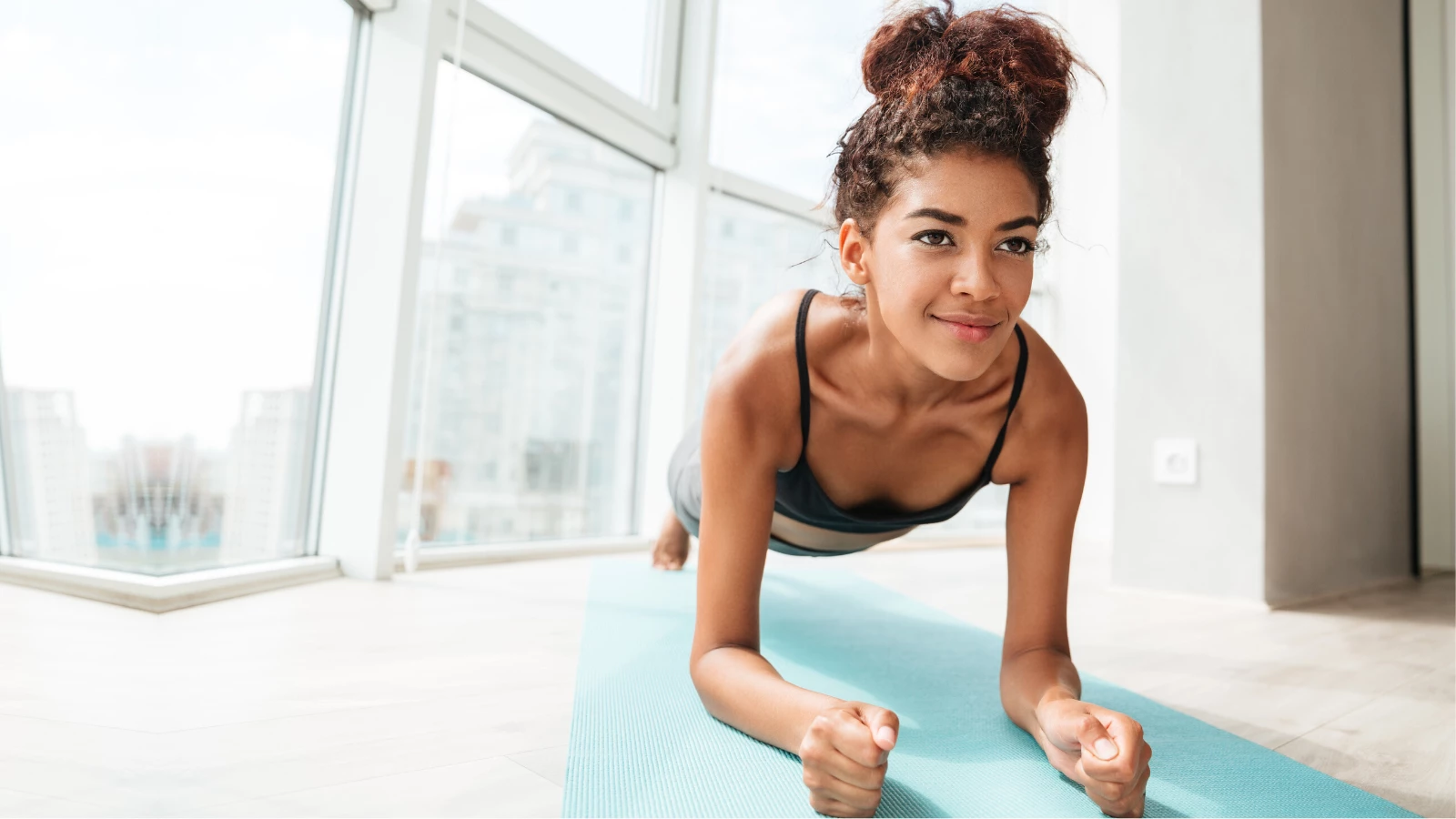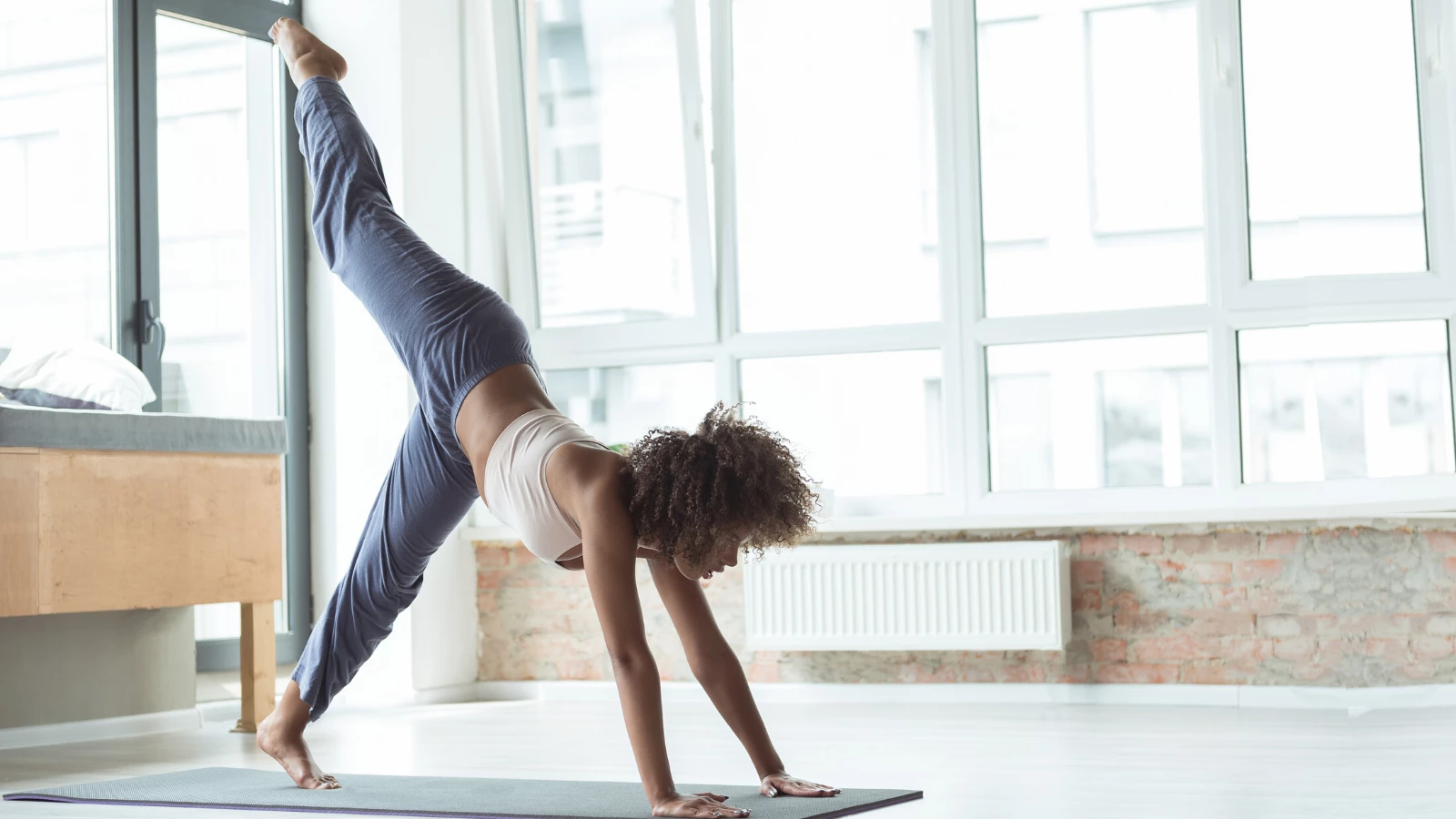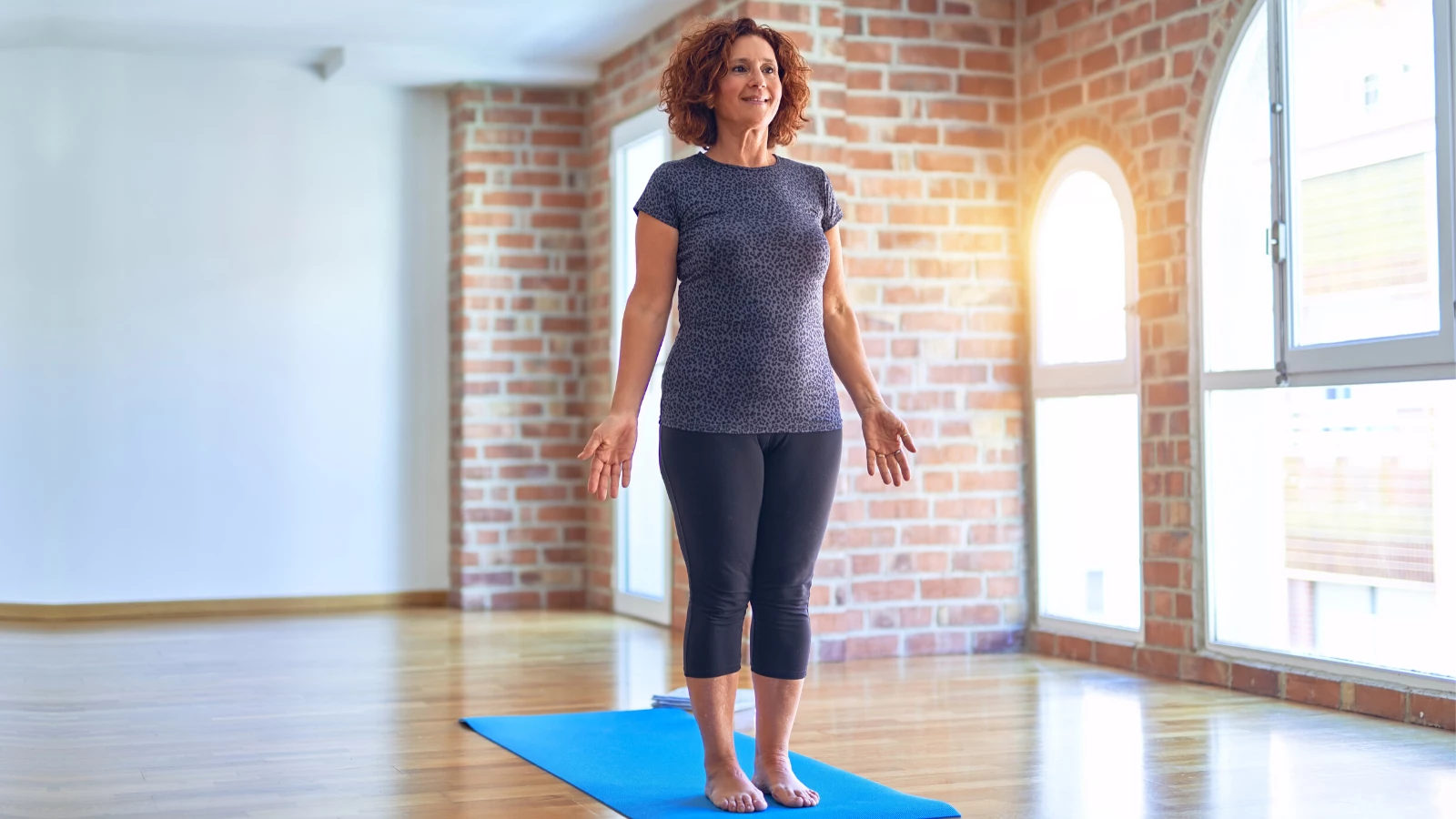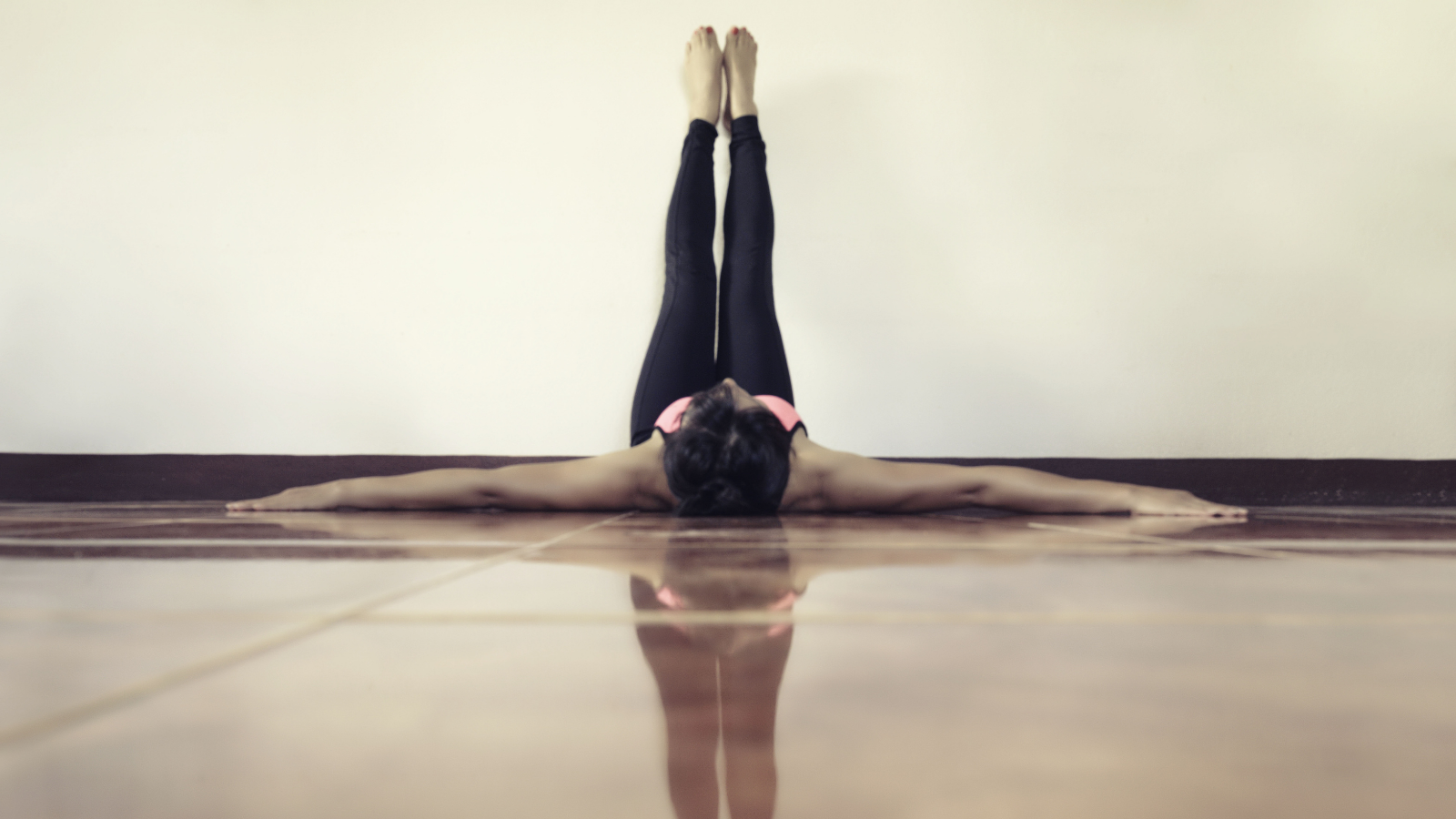Yoga for Detoxification: How to Power Up Your Body’s Natural Detox Processes

Article At A Glance
Sweat is the body’s natural self-detox system. Try this heat-building practice for a refreshing and cleansing yoga flow that powers up your body’s inherent detoxification processes.
Yoga helps detox our bodies. Let’s build heat in our practice today.
Twist longer. Breathe deeper. Sweat harder.
You’ve probably heard those phrases in a yoga class before. But are they true? Can yoga really help detox your body by twisting and sweating?
Yes. And no. The human body already has its own natural detoxification system in place. Although a daily practice of exercise and wellness can help it along, there are some myths that well-meaning yoga teachers continue to perpetuate as well.
How Yoga Practices May Aid Detoxification
Yoga, along with most physical exercises, helps the body’s natural detoxification systems to function properly.
The body’s lymphatic system and blood continuously deliver metabolic waste to the liver, kidneys, and digestive organs. This waste and other toxins absorbed from the environment get filtered and eliminated through urine, sweat, solid waste and even during exhalations.

The belief that yoga twists aid in detoxification most likely began with B.K.S. Iyengar, the founder of Iyengar Yoga.
Iyengar taught that twisting asanas created a “squeeze-and-soak” action in both the spine and the internal organs. The organs would become compressed in a twist, squeezing out old blood and waste, and then once released, fresh oxygenated blood would flow in, creating healthier organs–much like a dirty washcloth can take on fresh, clean water after being wrung out of the old dirty water.
The same concept applies to the vertebral discs of the spine. Gravity and aging tend to compress the discs causing them to lose moisture. Spinal twists will increase circulation to the area, creating a healthier spine.
I have used the dirty washrag analogy with my students in describing how a yoga twist will keep the body healthy. And I know from anecdotal experience that my students and I feel better after a yoga practice of twisting asanas.
Although science doesn’t back up the squeeze-and-soak theory, Iyengar wasn’t necessarily wrong. Twists help stimulate our organs, including those responsible for elimination, which in turn can help stimulate our metabolism and rate of excretion.
Twists also stimulate circulation; release tension in the muscles of the spine, abdomen, and ribcage; and help to create heat.

Yoga and Detox: Benefits of Sweating It Out with
Creating heat through sweating or a heated room is another popular detox tool used in yoga.
Sweat is the body’s secondary self-detox system. Whatever toxins the liver and kidneys are unable to discharge get stored in fat cells. A study published in the Journal of Environmental and Public Health detailed the finding of heavy metals such as lead, mercury, and arsenic in sweat. Trace amounts of BPA (bisphenol-A) have also been detected in sweat. (BPA is found in many commercial plastics and hygiene products.)
However, you can’t sweat out a night of overindulgence in alcohol or fatty foods. Anything you ingest needs to go through the body’s systems to be stored as nutrients, fat, or eliminated as waste.
Sweat has other benefits, though. Sweat is good for healthy skin. The water, minerals, and salt hydrate and exfoliate the skin. The uric acid in sweat prevents dry skin. Sweating also rids the skin of bacteria, dirt, and oils. The perfect pH factor for skin is the same pH as in sweat.
Other health benefits of sweating include:
- Exercising at a sweat-producing level releases endorphins that act as natural painkillers.
- Perspiration contains a naturally occurring antimicrobial called dermcidin, which can help fight germs including the common cold.
- Sweating prevents overheating by naturally cooling the body.
It’s important to shower soon after a sweaty yoga session. Impurities released through sweat can mix with bacteria on the surface of the skin. Also, the sweat released through the apocrine glands is what creates after-workout body odor.
The body’s detoxification systems are designed to run without any external forces. A regular yoga practice, including vigorous asana and pranayama, as part of an overall wellness plan can help the natural detox system run more efficiently.

Other ways to help your body run at a prime level include:
- Limit your intake of high-fat foods and alcohol to maintain a healthy liver.
- Drink plenty of water to help the digestive tract flow smoothly and to eliminate waste.
- Replace prepackaged food with whole food.
- Limit or avoid chemicals in self-care products such as lotion and makeup.
- Participate in a regular exercise routine.
Try This Heat-Building Yoga Practice to Power Up Your Body’s Natural Detoxification System
Breath of Fire
- Sit up tall with a straight spine, hands placed palm up on the knees, and eyes closed.
- On an inhalation, the belly relaxes and expands; on an exhalation, the diaphragm rapidly pulls the belly in. The inhalation/exhalation pace is quick yet even.
- When learning breath of fire, it helps to open your mouth and pant like a dog. Once the quick pattern is set, close your mouth and continue breath of fire.
Ardha Matsyendrasana (Half Lord of the Fishes Pose)
- Begin in a cross-legged position, using a blanket under the buttocks to alleviate hip discomfort and to ensure that your spine can be upright.
- Cross the left leg over the right, placing the left foot on the floor and the knee facing the ceiling.
- Inhale and lengthen the spine, and exhale toward your left leg.
- The left hand is placed behind the body for support, while the right elbow hooks outside the leg.
- Hold for three to five breaths. Repeat on the other side.
Surya NamaskarA and Building Heat

Sun Salutations not only move the spine through flexion and extension, but they create heat in the body. Practicing sun salutations at a faster pace also increases the heart rate. Practicing a couple of rounds of sun salutations between each set of twisting poses will keep internal body heat high as well as bring the spine back to neutral between twists.
Parivrtta Utkatasana (Revolved Chair Pose)
- Stand in Tadasana (Mountain Pose) on a nonskid yoga mat with your feet together or hip-width apart.
- Place your hands on your hips.
- Tilt your pelvis forward, pointing your tailbone back, and let your knees bend.
- Allow your torso to bend forward.
- Rotate to the right so that your left elbow presses against the right thigh.
- Place your hands in Anjali Mudra (Prayer Position).
- To increase the intensity, place a block between the thighs.
- Hold for three to five breaths before lifting back up to Tadasana.
- Repeat on the other side.
Adho Mukha Svanasana (Downward Facing Dog Pose)

Adding some abdominal work to Downward Facing Dog Pose increases intensity, creates internal heat, and activates the core muscles.
- Beginning in Downward Facing Dog Pose, raise the right leg into a Down-dog split.
- Exhale forward into Phalakasana (Plank Pose), pulling the right knee into the belly.
- Inhale back to the Down-Dog split.
- Exhale into Plank Pose, pulling the right knee toward the right elbow.
- Inhale back to the Down-Dog split.
- Exhale into Plank Pose, pulling the right knee to the left elbow.
- Inhale back to Down-Dog split.
- Repeat on both sides.
Parivrtta Anjaneyasana (Revolved Lunge Pose):
- Stand in Tadasana (Mountain Pose) on a nonskid yoga mat.
- Fold forward into Uttanasana (Standing Forward Fold).
- Bend your knees and place your hands on your mat on the outsides of your feet.
- Step your left foot back to a distance that allows your right knee to bend and the right shin to be vertical.
- Let your left knee come to the floor.
- Raise your torso to an upright position, extending your arms up toward the sky. Be careful not to let your left hip joint collapse toward the floor. Lift up slightly through the hip joint—toward the sky—to protect the cartilage and labrum of your hip joint.
- Bring the hands together to Anjali Mudra at chest level and slowly twist to the right.
- Hook the left elbow outside the knee.
- Hold for three to five breaths. Switch sides.
Virabhadrasana II (Warrior II):
Warrior II increases stamina and stimulates the abdominal organs.
- Stand with your feet approximately a leg-length apart (two to three feet) on a nonskid yoga mat.
- Turn your right leg outward 90 degrees and your left leg inward about 30 degrees, allowing the left side of your pelvis to turn along with the rest of the leg.
- Extend your arms outward at shoulder level, turning your palms downward.
- Ground your left foot and bend your right knee to about a 90-degree angle, keeping your ribcage facing forward.
- To increase intensity, turn the palms and elbow creases to face the ceiling while drawing the shoulders down the back.
- Hold for three to five breaths, practicing on both sides.
Viparita Karani (Legs Up the Wall)
After an intense yoga practice, Legs Up The Wall is the perfect way to prepare your body for Savasana. Legs Up the Wall relaxes the mind, lowers heart rate and blood pressure and slows down breathing.
- Gather up three firm blankets (wool or cotton are best) or a yoga bolster and one firm blanket. It’s possible to practice with just one firm blanket if that’s what you have on hand.
- It is also okay to practice with no bolster and/or blankets. You can make it simple by lying on your back on the floor with your legs stretching up the wall.
- If you’re going to practice with blankets, fold two of your blankets into a bolster size (eight to ten inches wide), and stack one on top of the other. Alternately, use a standard-sized (flat) yoga bolster.
- Place your stack of blankets or your bolster parallel to, and four to eight inches from, the wall.
- Fold your other blanket to the same size and place it perpendicular to the other two blankets or bolster, forming a “T” shape.
- Sit on the right end of your stacked blankets so that your left side is touching the wall.
- Tuck your knees in toward your torso and carefully roll to the left toward the center of your stack so that you end up on your back with your legs extending up the wall and the tops of your shoulders and back of your head resting on the third blanket. Your lower buttocks will hang slightly off the blanket, toward the wall. Adjust your position so that the perpendicular blanket is centered under your shoulders and head.
- Make sure that your entire abdomen is horizontal so that your torso is not slanting down into your shoulders. Move your blankets away from the wall if necessary.
- You might enjoy placing a strap around your thighs to prevent your legs from splaying apart. Use an eye bag if you have one.
- You can stay in the pose as little or as long as you like—5 to 20 minutes or more.
- When you are ready to leave the pose, bend your knees and slide your feet down the wall.
- Roll onto either side and pause there before gently pushing up to a sitting position.
 Jennifer Williams-Fields E-RYT 200 is passionate about writing, yoga, traveling, public speaking, and being a fabulous single momma to six super kids. Doing it all at one time, however, is her great struggle. She has been teaching yoga since 2005 and writing since she first picked up a crayon. Although her life is a sort of organized chaos, she loves every minute of the craziness and is grateful for all she’s learned along the way. Her first book “Creating A Joyful Life: The Lessons I Learned From Yoga and My Mom” is now available on Amazon. She has had her essays featured on Yahoo! and Dr. Oz The Good Life. She is a regular writer for Elephant Journal Magazine, Your Tango, and YogaUOnline. See more from Jennifer at jenniferwilliamsfields.com
Jennifer Williams-Fields E-RYT 200 is passionate about writing, yoga, traveling, public speaking, and being a fabulous single momma to six super kids. Doing it all at one time, however, is her great struggle. She has been teaching yoga since 2005 and writing since she first picked up a crayon. Although her life is a sort of organized chaos, she loves every minute of the craziness and is grateful for all she’s learned along the way. Her first book “Creating A Joyful Life: The Lessons I Learned From Yoga and My Mom” is now available on Amazon. She has had her essays featured on Yahoo! and Dr. Oz The Good Life. She is a regular writer for Elephant Journal Magazine, Your Tango, and YogaUOnline. See more from Jennifer at jenniferwilliamsfields.com








